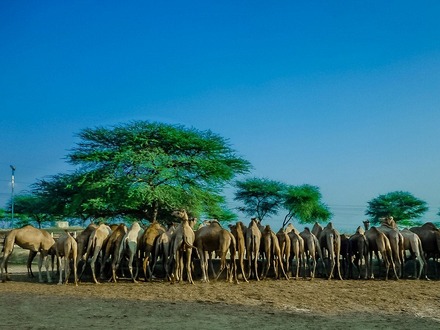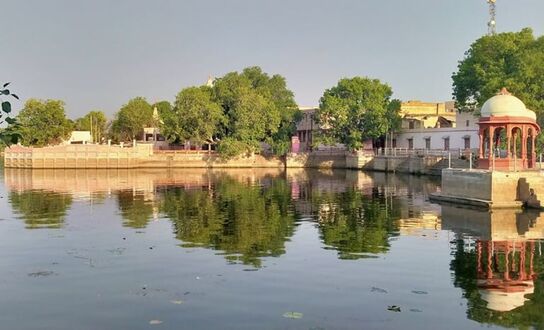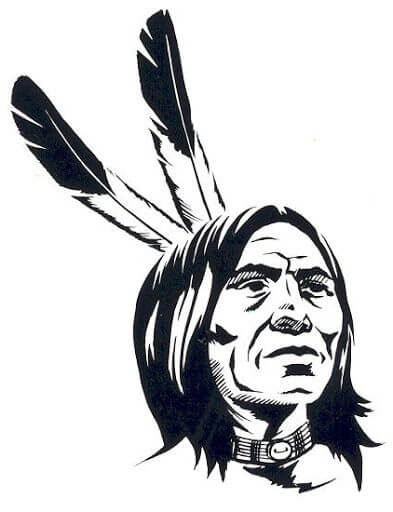- Home
- Holiday Ideas
-
-
- Choose Your Traveling Theme
-
- Adventure Tourism
-
- Cultural Tourism
-
- Tour Packages
-
-
- Packages by State
-
- Holidays by Interest
-
- Popular Tour Packages
-
- Fair And Festivals
-
- Ayurveda And Yoga
-
- Offers
-
- Destinations
-
Bikaner The camel country
Bikaner
A vast expanse of golden undulating sand dunes surrounds the colourful and bustling city of Bikaner, ensconced within the desert state of Rajasthan, making it an off-beat tourist destination. Nestled within the Thar desert, this ancient city is adorned with gigantic and spectacular forts and palaces that invite thousands of tourists across the world . The old a part of the town stands as a silent witness to the rich history of the region when it had been ruled by Rao Bika, the prince of the Rathore clan, in 1488. Surrounded by high stone walls, the older a part of the town may be a potpourri of culture and tradition.
...Five gigantic gates lead you into a labyrinth of lanes that are dotted with quaint bright red and yellow sandstone houses. At an equivalent time, its modern counterpart takes you on a roller coaster, with its bustling bazaars, exquisite handicrafts and delicious cuisine. Bikaneri shawls, blankets, carpets, and candy are famous along side lacquerware handicrafts that make it a hotspot for shoppers. From beautiful glass work and attractive mojris (traditional shoes) to pottery, you’ll be spoilt for choice. While in Bikaner, do not forget to shop for the Geographical Indicator (GI) tag, bhujiya, which may be a delightful snack.
Bikaner’s deserts offer thrilling camel safaris. This unmissable experience may be a good way to soak within the traditional essence of the town , when camels were the sole mode of transport and long journeys were traversed on their backs.
How to get there
By Air
The nearest airport is Civil Airport at Jodhpur, which is 253 km away.
By Road
The bus stand is north of the city centre. There are frequent express buses to Agra, Ahmedabad, Ajmer, Barmer, Delhi, Jaipur, Jaisalmer, Jhunjhunu, Jodhpur, Kota and Udaipur.
Rail
Bikaner has railway connections to several destinations in India including Jaipur, Jaisalmer, Churu, Jodhpur, Delhi, Mumbai, Kolkata, Guwahati etc.
Attractions In Bikaner

Junagarh Fort
Junagarh Fort is one among the foremost decorated forts in India and houses opulent palaces that offer you a peek into the lives and times of the maharajas of Bikaner. Unlike most forts in Rajasthan, this one has not been built on a high rock and has lower ramparts and towers. this is often indicative of the very fact that it had been built more for luxury than defense. The fortified complex houses many beautiful palaces, which are reflective of the varied rulers who once lived here. Historians say that the Junagarh Fort may be a living museum of arts that features an Indo-Mughal architecture. The red sandstone utilized in the fort is claimed to possess been brought from Jaisalmer.
Palaces within the fort are built around courtyards that are conceived as public squares. These palaces include the Badal Mahal Palace, the Gaj Mandir Palace, the Phool Mahal Palace, the Anup Mahal Palace, the Hawa Mahal Palace and therefore the Vikram Vilas Palace. The famous Anup Mahal is renowned for the exquisite usta add Mughal style that's seldom encountered anywhere else. it's said that the Badal Mahal was built to please Maharaja Sardar Singh (1895-1911), who was an excellent lover of music. The blue walls of this palace are beautifully painted with white clouds (badal). The Hawa Mahal Palace at the highest floor was built to enjoy cool winds within the summer season while the Gaj Mandir Palace presents an exquisite display of marble inlay work. Inspired from the palaces in Europe, the Vikram Vilas Palace was built by Maharaja Ganga Singh (1888-1943) and have become the Darbar Hall, where the rulers held court. Don't miss the DH9 De Haviland war plane, which was presented to Maharaja Ganga Singh by British government to recognise the contribution of the Bikaner State Forces during the primary war .
Lalgarh Palace
Lalgarh Palace is an architectural masterpiece showcasing the right blend of Rajputana, European and Mughal architecture. the outside of this palace, built with sandstone, has an Indian influence, while the inside , replete with drawing rooms, smoking rooms, grand halls, lounges, pavilions and cards rooms, boast a quintessential British style. The complex of the palace features magnificent pillars, elaborate fireplaces, Italian colonnades, a museum and a library. Two wings of the palace function luxury hotels while one among them houses the royalty of Bikaner.
Tourists must visit the museum at the palace to realize insight into the princely lives of the rulers of Bikaner. the simplest time to go to is from November to February when the weather remains pleasant.


Deshnok
Deshnok is legendary for the temple of Karni Mata, who is believed to be an incarnation of Goddess Durga. Famed because the rat temple, as rats and mice are worshipped, it’s one among India’s most fascinating temples that pulls devotees from everywhere the planet . The temple houses as many as 25,000 rats who are referred to as Kaabas. it’s considered highly auspicious to possess a white Kaaba meet your feet as they’re believed to be the sons of Karni Mata. Around 600 families of the Charan clan claim to be the descendants of Karni Mata and believe that they’re going to be reincarnated as rats.
One of the favored legends related to the temple is that when Laxmana, the stepson of Karni Mata drowned within the Kapil Sarovar while attempting to drink water, Karni Mata prayed to Yama Raj (the God Of Death) so ardently that he not only brought back Laxmana to life but reincarnated all her sons within the sort of rats.
The structure of the temple was completed within the early 20th century by Maharaja Ganga Singh of Bikaner (1888-1943). do not forget to form a wish within the lion's ears at the most gate before you allow the temple complex. Tourists also can visit the recently built Karni Mata Panorama located on the way back to Bikaner from Deshnok. The recently built museum depict the stories of Karni Mata through beautiful sculptures, paintings and tableaus.
Camel breeding farm
Bikaner is that the ideal spot to experience the unconventional. the simplest of those is that the Camel Breeding Farm, located on the outskirts of the town . it’s referred to as Government Camel Breeding Farm and is supposedly one among the most important camel reproduction farms in Asia. cover a neighborhood of two ,000 acre, this farm may be a beautiful expanse. The sight of camel calves gamboling round the place is exciting. Stroll through various corals and skim the knowledge panels to urge an insight into the method of camel breeding and agriculture.
One can enjoy camel rides or frozen dessert made from camel's milk. you'll also inspect an exclusive range of camel leather articles at the Camel Leather Shop. it always takes an hour or less to completely explore the intriguing farm. The farm was founded by the Indian Council of Agricultural Research in 1984 to conduct exclusive research on camels.


Gajner Palace and Wildlife Sanctuary
Set amid serene and picturesque surroundings, Gajner Palace sprawls over a neighborhood of 6,000 acre. Situated on the banks of the serene Gajner Lake, its architectural beauty is delightful. it’s a perfect spot to enjoys boat rides, sanctuary dinners, desert safaris and pleasant nature-walks. Gajner Palace was founded by Maharaja Gaj Singh (1746-1787) of Bikaner in 1784 then completed by the good Maharaja Ganga Singh (1888-1943).
Nestled atop alittle hill, Gajner Wildlife Sanctuary may be a haven for wildlife enthusiasts, who can spot fauna like nilgai, chinkara, black buck, wild boar, flocks of imperial sand grouse and lots of other species of migratory birds. Primarily created to function a lodge for the royalty , it had been converted into a luxury hotel in 1976.
Karni Mata mandir
Famed because the rat temple, Karni Mata Mandir draws devotees and tourists from far and wide. The much revered temple is devoted to Goddess Karni Mata, who is believed to be an incarnation of Goddess Durga. The temple houses as many as 25,000 rats who are referred to as Kaabas. it’s considered highly auspicious to possess a white Kaaba meet your feet as they’re believed to be the sons of Karni Mata. Around 600 families of the Charan clan claim to be the descendents of Karni Mata and believe that they’re going to be reincarnated as rats. Karni mata is additionally the Kul Devi of Bikaner’s royalty .
She lived within the 14th century and performed many miracles. one among the favored legends related to the temple is that when Laxmana, the stepson of Karni Mata drowned within the Kapil Sarovar while attempting to drink water, Karni Mata prayed to Yama Raj ( the God Of Death ) so ardently that he not only brought back Laxmana to life but reincarnated all her sons within the sort of rats. It's interesting to notice that these rats don't spread any quite stink like rats usually do and that they haven't been the cause for spreading any disease either. Eating food that has been nibbled on by the rats, is actually considered auspicious. ahead of the temple may be a beautiful marble facade, which has solid silver doors. The building was completed in its current form within the early 20th century by Maharaja Ganga Singh of Bikaner. do not forget to form a wish within the lion's ears at the most gate before you allow the temple complex. Tourists also can visit the recently built Karni Mata Panorama located on the way back to Bikaner from Deshnok. The museum depicts the stories of Karni Mata through beautiful sculptures, paintings and tableaus.


Kolayat
Kolayat is one among the foremost visited religious sites in Rajasthan that’s famed for the holy Kolayat Lake. There are several temples near the lake but the foremost famous of them is that the Kapil Muni Temple. Legend has it that Kapil Muni, the advocate of Shankya Yoga, was smitten with Kolayat’s peaceful vibe and administered a penance for the development of the planet . The place even finds a mention within the holy scriptures of Hindus as Kapilayatan. After visiting the temple, tourists can relax at the peaceful ghats of the tranquil lake and catch a gorgeous sunset or visit the nearby bustling market and buy local handicrafts of Bikaner.
The town is additionally famous for hosting the annual Kolayat Fair during Kartik Purnima, which pulls devotees and tourists from all parts of the country. the simplest experience one can take during the fair is attending the evening event, Deep Malika, when devotees float earthen lamps within the sacred lake as a ritual. Kolayat is situated at a distance of fifty km from Bikaner and may be easily reached using private and conveyance .
WANT TO RENT A CAR IN INDIA ?
Choose Your Traveling Theme

 TOUR BOOKING
TOUR BOOKING















